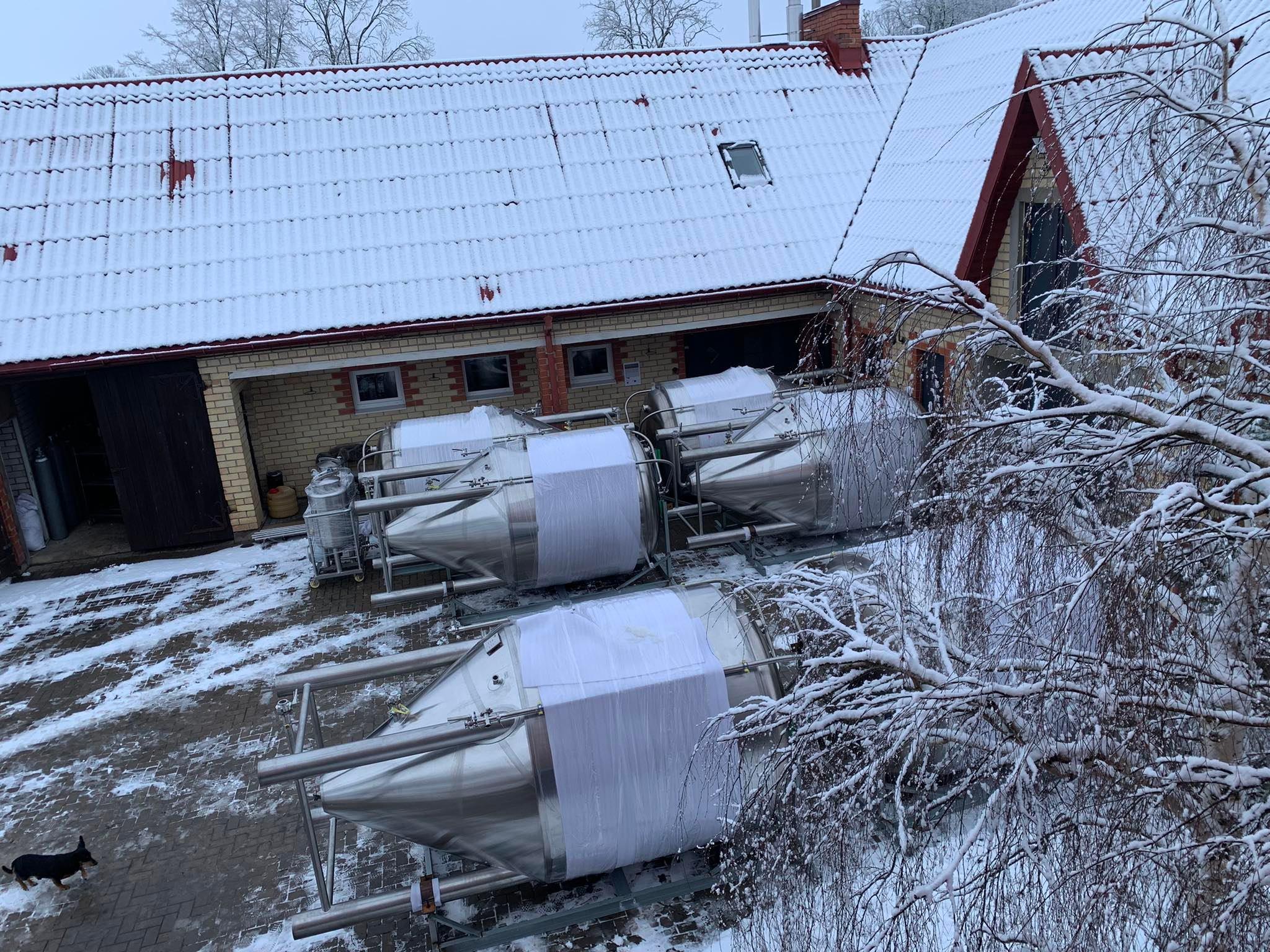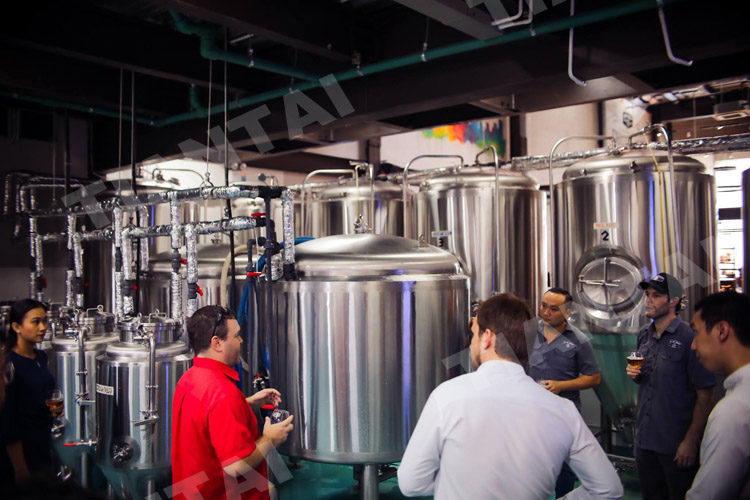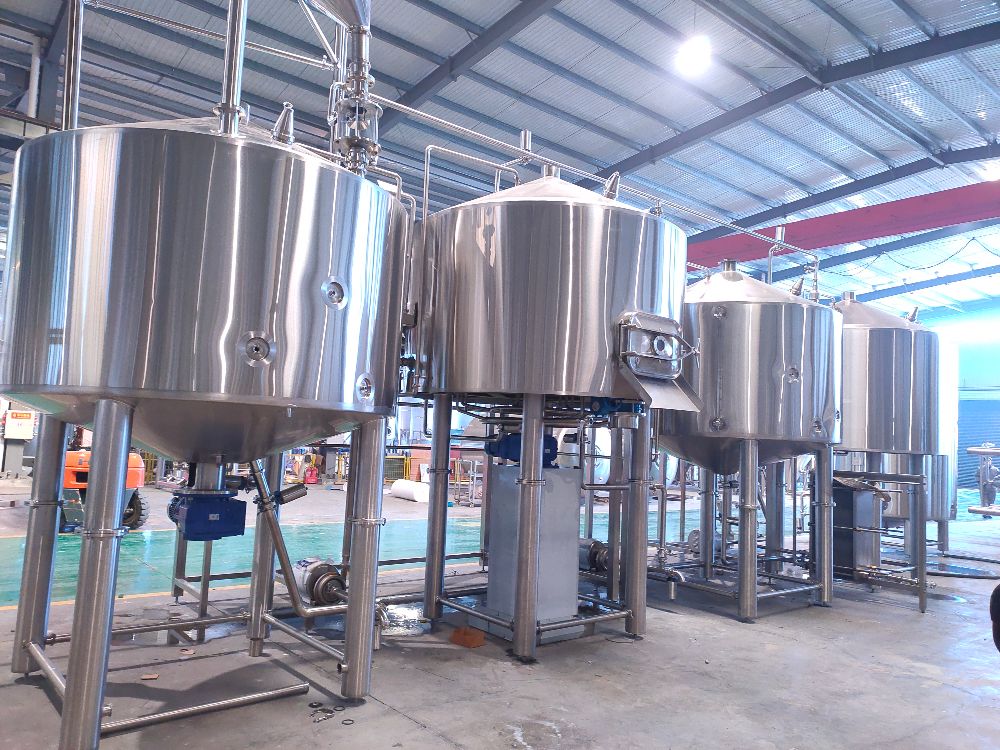The possible reason of yeast autolysis in beer fermenters
- Oct 06, 2023
- 148
- tiantai
When we tasting new finished craft beer from beer fermenters, sometimes, there is usually a ‘yeasty’ flavour. Experienced brew master will say, this should happened yeast autolysis. So, what is Yeast autolysis?
Yeast autolysis, the process of yeast self-digestion, occurs for several reasons, primarily related to changes in yeast cell health, environmental conditions, and the stage of the fermentation process. Here are the key factors that contribute to yeast autolysis:

Cell Death: Yeast cells have a finite lifespan, and as they age, they become more fragile. When yeast cells die, their cell walls rupture, and the contents of the cells are released into the surrounding liquid. This is the primary trigger for yeast autolysis.
Lack of Nutrients: Yeast requires essential nutrients to maintain its health and vitality during fermentation. If the yeast is deprived of nutrients (such as nitrogen, vitamins, or minerals) or if it exhausts its food supply (sugars), yeast cells can become stressed and die more rapidly, increasing the likelihood of autolysis.
High Pressure: In certain fermentation processes, such as those used to produce sparkling wines and some beer styles, yeast is exposed to high pressure due to carbonation or bottle conditioning. This pressure can accelerate the autolysis process.
Temperature: Temperature plays a significant role in yeast autolysis. Elevated temperatures can speed up the autolysis process, while lower temperatures can slow it down. Proper temperature control is crucial to minimizing autolysis risks.
PH Levels: Extreme pH conditions, whether too acidic or too alkaline, can stress yeast cells and lead to autolysis.
Oxygen Exposure: Yeast autolysis can be exacerbated by exposure to oxygen, which can cause oxidative stress and accelerate cell death. This is a particular concern during storage or aging.
Time: The longer yeast cells remain in the fermentation vessel or storage vessel after fermentation is complete, the higher the risk of autolysis. This is especially true if the yeast is not promptly removed from the beer or wine, as yeast cells continue to break down over time.
It's important to note that yeast autolysis can be both desirable and undesirable, depending on the context. In some cases, such as the production of certain wine styles or aged beers, controlled yeast autolysis is intentionally encouraged to develop specific flavors and characteristics. In other cases, like the production of fresh and hop-forward beers, brewers take great care to avoid autolysis as it can result in off-flavors and cloudiness. Controlling these factors and understanding the yeast's behavior is essential in the production of various fermented beverages.
We provide complete brewery system from 50L-100HL. Welcome contact Nicole now to discuss further and customize your beer brewing equipment and beer fermenter to start your production trip. Cheers!
Edited by Nicole
Sales manager | Tiantai beer equipment
Email: [email protected]
Yeast autolysis, the process of yeast self-digestion, occurs for several reasons, primarily related to changes in yeast cell health, environmental conditions, and the stage of the fermentation process. Here are the key factors that contribute to yeast autolysis:

Cell Death: Yeast cells have a finite lifespan, and as they age, they become more fragile. When yeast cells die, their cell walls rupture, and the contents of the cells are released into the surrounding liquid. This is the primary trigger for yeast autolysis.
Lack of Nutrients: Yeast requires essential nutrients to maintain its health and vitality during fermentation. If the yeast is deprived of nutrients (such as nitrogen, vitamins, or minerals) or if it exhausts its food supply (sugars), yeast cells can become stressed and die more rapidly, increasing the likelihood of autolysis.
High Pressure: In certain fermentation processes, such as those used to produce sparkling wines and some beer styles, yeast is exposed to high pressure due to carbonation or bottle conditioning. This pressure can accelerate the autolysis process.
Temperature: Temperature plays a significant role in yeast autolysis. Elevated temperatures can speed up the autolysis process, while lower temperatures can slow it down. Proper temperature control is crucial to minimizing autolysis risks.
PH Levels: Extreme pH conditions, whether too acidic or too alkaline, can stress yeast cells and lead to autolysis.
Oxygen Exposure: Yeast autolysis can be exacerbated by exposure to oxygen, which can cause oxidative stress and accelerate cell death. This is a particular concern during storage or aging.
Time: The longer yeast cells remain in the fermentation vessel or storage vessel after fermentation is complete, the higher the risk of autolysis. This is especially true if the yeast is not promptly removed from the beer or wine, as yeast cells continue to break down over time.
It's important to note that yeast autolysis can be both desirable and undesirable, depending on the context. In some cases, such as the production of certain wine styles or aged beers, controlled yeast autolysis is intentionally encouraged to develop specific flavors and characteristics. In other cases, like the production of fresh and hop-forward beers, brewers take great care to avoid autolysis as it can result in off-flavors and cloudiness. Controlling these factors and understanding the yeast's behavior is essential in the production of various fermented beverages.
We provide complete brewery system from 50L-100HL. Welcome contact Nicole now to discuss further and customize your beer brewing equipment and beer fermenter to start your production trip. Cheers!
Edited by Nicole
Sales manager | Tiantai beer equipment
Email: [email protected]

.jpg)


